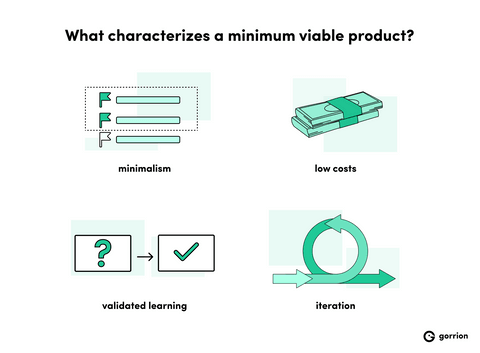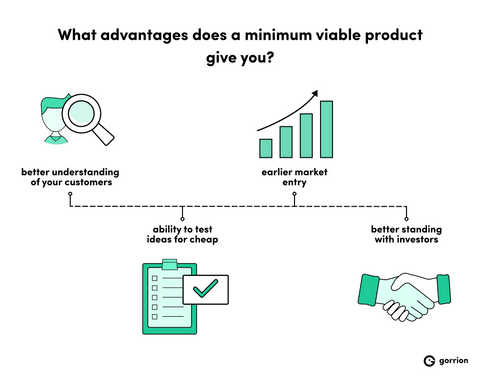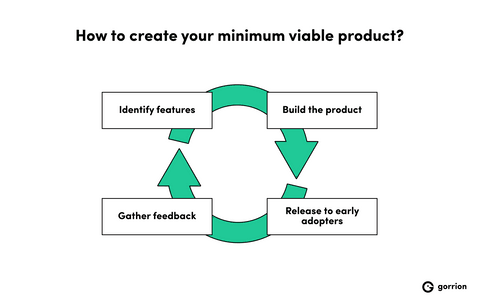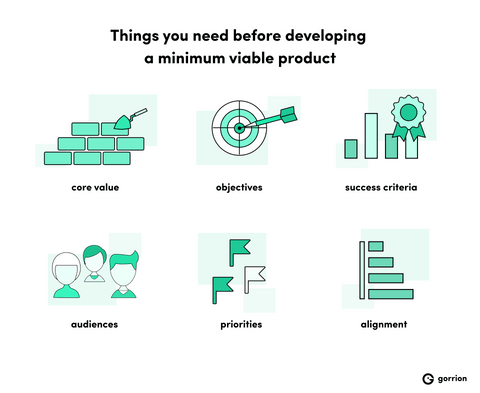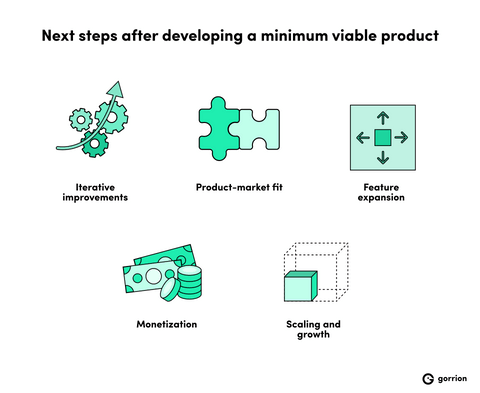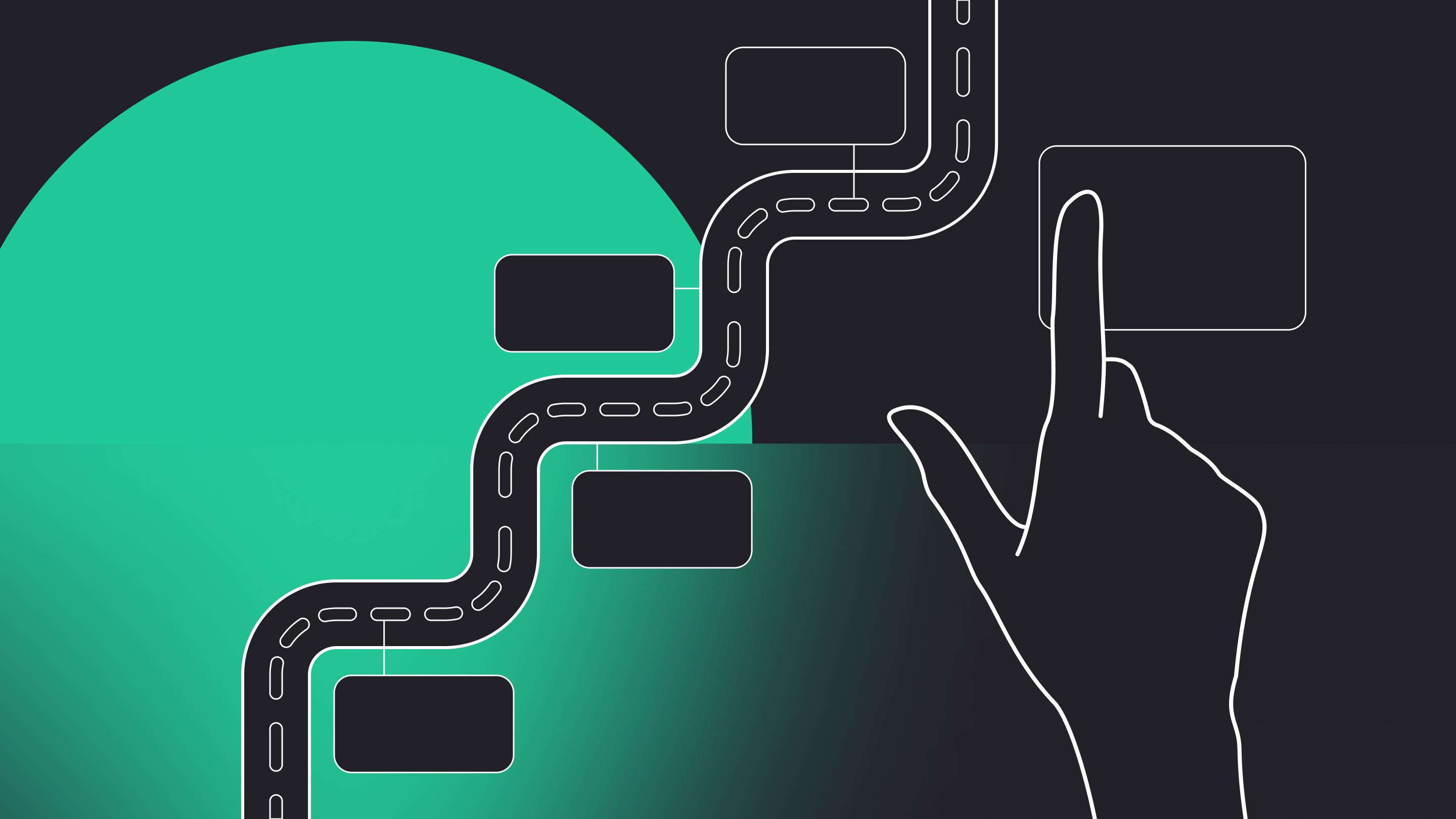


Minimum Viable Product – what is MVP?
When does developing an MVP bring the most value? What are the steps involved in the MVP development process? How does it help in market validation?
Software development is an inherently complicated and time-consuming process. What’s more – having a software product in itself is not enough to succeed. To win over your competitors, you need to focus on something else – not the product itself, but its users. And what’s a better way to do this than to build a minimum viable product (MVP) first?
What’s a minimum viable product (MVP)?
MVP stands for minimum viable product, an early model of the product used to verify if its core functionalities meet user needs. In other words: you develop the most basic, stripped down version possible of your product. Then, you give it to your potential customers to check if they actually need it and – if yes – how they use it.
Admittedly, words like “minimum,” “most basic,” and “early model” may not sound particularly convincing to you. Especially when you have a big business idea and a far-reaching vision for a product that you’re sure will be a smashing success. And while we live for visionary ideas, it’s important to note that these words don’t really mean anything bad when it comes to MVPs.
A minimum viable product still has core product characteristics. It is usable, it offers core functionalities, and visually it looks (mostly) like the final app would. It has just enough features. But no bells and whistles. That’s the trade-off between having a workable product and saving costs.


Have a project in mind?
Let’s meet - book a free consultation and we’ll get back to you within 24 hrs.
MVP characteristics
There are four features that characterize any minimum viable product development. Conveniently, they also shed more light on what an MVP is and what it’s not.
- Minimalism: it’s in the name! A minimum viable product only delivers features that are essential to provide value to early adopters.
- Lower costs: focusing on essentials minimizes the costs and reduces risks involved in development.
- Validated learning: the primary goal of an MVP is to gather feedback and verify your assumptions about the user needs.
- Iteration: the purpose of delivering small increments quickly is to act on and improve upon the feedback, not the assumptions.
The purpose of a minimum viable product (MVP)
From business perspective, companies – especially start-ups – develop minimum viable products to avoid sunken costs. Because an MVP only contains the bare essentials, it’s relatively quick and cheap to develop (compared to a full-fledged product). At the same time, it allows the company to test business hypotheses by verifying its usability. If it turns out people don’t actually want this product, it can be benched; if they do want it, then the MVP provides valuable insights into how the users interact with it and a base for future development.
When talking about the main goal of an MVP, Eric Ries, the creator of Lean Startup methodology, said that it allows the development team to gather the most valuable validated feedback from the product’s potential users with the least effort. So from development perspective, one of the main goals of a minimum viable product is to test hypotheses by gathering actual user feedback.
The benefits of MVP approach in software development
If done correctly and effectively, a minimum viable product offers plenty of benefits. There are tons of companies that successfully scaled their MVP into a full-fledged product. Facebook and Dropbox are but two examples. So why did they do it and why should you too consider creating an MVP before launching a final product? Let’s see.
Understand market needs
First of all, an MVP lets you verify if there is even a need for your product on the market and if meets user requirements.
By giving them a tangible product instead of pitching a business idea, you allow the early adopters to actually test how it works and if they get any actual value from it. In turn, they can provide you with valuable feedback on what works, what doesn’t, and what’s missing.
Test business ideas at minimal cost
One of the main objectives of MVP development is to learn about the product as much as possible, in the shortest amount of time, and at the lowest cost. By reducing the scope of the project to the “bare essentials,” you can make sure there won’t be any unnecessary spend should the idea fail. This is particularly important for startups and small companies that have limited resources or funding.
Gain market advantage
An MVP allows you to enter the market quickly instead of spending time and resources on developing a fully-featured product. And in some innovation-oriented industries (including anything that has to do with software!) time-to-market is a crucial factor. It allows you to establish an early presence, build awareness, and iterate.
Communicate your value
I can’t even tell you how much does presenting a tangible MVP increase your chances when you’re looking for funding or investor / stakeholder support. It answers all the concerns. It shows that you have a vision for the product; you’ve considered the market, and came up with something that’s actually doable.
So, how does MVP work?
OK, now that you’re convinced a minimum viable product is a good idea, you’re probably wondering how you should go about it. Generally speaking, there is a certain “scaffold” you can rely on. There’s a series of steps you should follow to make the best out of your MVP.
- Identify core features
Think what’s the absolute basic purpose of your product and what’s the minimum feature set that you need to realize that purpose and deliver value to customers. - Build the first version
Develop the initial version of the actual product, making sure it delivers on the core features (and only the core features). Remember that, unlike a proof of concept, a minimum viable product also delivers on the design. - Release to early adopters
Share the MVP with a small set of users. Market segmentation isn’t really a part of the MVP process (it should be done before), but make sure you gather proportionate feedback from all key groups. - Gather feedback
Your MVP is only as good as the feedback you collect. Do solid user research – conduct surveys, interviews, user testing sessions; observe user behavior and usage patterns. - Analyze feedback
Go over the data you’ve got to understand how people interact with your product, what problems they get stuck on, what they find most useful. Identify patterns, pain points, and opportunities for improvement. - Iterate
Based on your conclusions, prioritize what needs to be fixed first and what features are making your product incomplete. Then go back to work again – improve the product bit by bit. - Rinse and repeat
Then it’s all about repeating the process in increments – developing features, releasing them, creating a feedback loop, and drawing from it until you (and the users) are satisfied with the product.
As you can see, while the process is structured and has a lot of benefits, it may still be hard to execute! If you’re feeling out of your depth, software development companies like Gorrion have years of experience and multiple successful MVPs under their belt, so it might be a good idea to turn to them for help. They will explain the process to you, run workshops to establish your requirements, and – if you decide you like working with them – they can take care of the entire development process.
What do you need before a successful MVP?
So, I said that market segmentation isn’t a part of an MVP. But there’s a bunch of other things you should be clear on, so that you don’t waste time and money. Let’s take a look at the questions you should ask yourself before you get to work.
What’s the product’s core value?
If you want to test core product functionalities, you first need to know what one problem it’s supposed to solve or what one unique value it offers. This will help you cut through the noise and set clear priorities for development.
What are my objectives?
You should clearly define the objectives you want to achieve with your MVP. Do you want to validate your assumptions? Gather user feedback? Test market demand? An MVP can help you with all of these, but you should be mindful of what answers you’re looking for.
What are my success criteria?
Piggybacking off on that, consider the metrics for your success – what will prove that the MVP has achieved its objectives? These can be metrics like user engagement, conversion rates, user satisfaction, or specific feedback you’re looking for. Defining these criteria will help you measure the effectiveness and impact of your MVP.
Who’s my audience?
You should determine the target audience or user segments of your product before you start working on a minimum viable product. This includes understanding what your users need, want, prefer, and actively avoid. This way you’ll know what features to develop and whom to test them on.
What are my priorities?
Now that you know your value, objectives, and audiences, you can decide on your priorities. Doubtlessly, there will be much more that you want to do than what you can do, so focus on features that are necessary to provide a functional solution and deliver value to users.
Is everyone on the same page?
Ensure that the scope of your MVP is communicated clearly to the development team, stakeholders, and everyone else involved. This will help everyone cut the fluff and focus on the objective. It will also allow you to manage their expectations.
And what comes after?
Now that you know what you need before you start working on a minimum viable product, you may start wondering… what comes after? Here are some possible steps for future development, based on our clients’ experience.
Iterative improvements
Based on the feedback and insights gathered from the MVP, you can gradually introduce more improvements to the product. Address identified issues, add new features, and refine the user experience based on user feedback and market demands.
Product-market fit
Once you validate the core value proposition of your product through, the focus shifts towards achieving product-market fit and developing a “minimum marketable product.” This involves refining the product to better align with the needs, preferences, and behavior of the target audience.
Feature expansion
As your product gains momentum, you may consider expanding its feature set to meet the evolving needs and expectations of your users. Prioritize features that differentiate your product from competitors or tap into new market opportunities.
Monetization
Now that you have paying customers, evaluate your business model and monetization strategy to ensure long-term sustainability and profitability. Assess revenue streams, pricing models, subscription plans, and monitor market dynamics.
Scaling and growth
As you continue to refine the product and gain traction on the market, it’s only natural that eventually you’ll start growing and have to scale. So develop strategies to acquire more customers, expand into new markets, or increase user adoption.
Our way of doing things
Some companies will offer to create the entire product for you immediately. Well, if you follow us, or even better – if you work with us – you know it’s not how we do this.
At Gorrion, we care about your time and resources. That’s why when talking with our clients, we often recommend building an MVP first. It’s a part of our software development process. With the use of the MVP, you can check how your product idea will be perceived by users and bring it to life at a relatively low cost.
What’s more, since the research feedback allows you to improve your app, you’re continually working on your product and simultaneously increasing its value. Also, MVP development is a much cheaper solution than designing a whole project with many functionalities and features. It reduces the risk and saves you money that can be spent on marketing or promotion.
Conclusion
As you can see, a minimum viable product strategy emphasizes an iterative and incremental development process, so that you can validate assumptions, learn from users, and make informed decisions. It provides a lean and agile way to develop products, reducing risks and optimizing resource allocation while maximizing the chances of building a successful and user-centric solution. It proves that you don’t need a large budget to bring value – sometimes, you just need an MVP.
Want to build an MVP? Book a free consultation with Leo or send us a message. We’d be happy to meet you and discuss your idea.
Editor’s note: We’ve originally published this post in August 2020 and updated it in June 2023 for comprehensiveness.


Have a project in mind?
Let’s meet - book a free consultation and we’ll get back to you within 24 hrs.
At Gorrion, Dominika Stankiewicz manages content. Having spent a decade in marketing and communications, she’s the master of the written word and the guardian of style. On our blog she shares her experience in B2B product marketing to help SaaS companies plan and execute their go-to-market strategy. In her spare time, she reviews manuscripts for publishers and bakes cakes. She loves cats, books, and American football.

